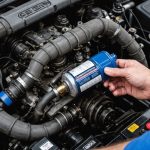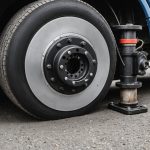Overview of Aftermarket Sunroofs
Purchasing an aftermarket sunroof can be an exciting way to enhance the driving experience and add a touch of luxury to your vehicle. There are several aftermarket sunroof types available, each offering unique features. Pop-up sunroofs are a cost-effective choice; they can be operated manually, allowing you to open or tilt them slightly for ventilation. Spoiler sunroofs, on the other hand, function similarly to pop-up models, but include an electric tilt and slide mechanism, providing easier operation. For those seeking more extensive openings, built-in sunroofs offer a seamless integration by sliding between the car’s roof and interior lining.
Adding a sunroof can significantly improve your vehicle’s ambiance. Enhancing natural light within the cabin and allowing fresh air circulation are just a couple of the potential benefits of sunroofs. However, it is crucial to ensure that the chosen type is compatible with your car. Sunroof compatibility largely depends on the vehicle’s roof shape and the available space for installation. Some cars may need minor modifications, while others might not accommodate a sunroof at all. Consulting with a specialist can guide you through the optimal options for your specific make and model.
Also read : Ultimate Guide to Installing and Tuning Performance Chips in UK-Spec Cars
Preparing for Installation
Before diving into the installation process, it is crucial to gather the essential tools needed for a smooth experience. Ensure you have items like a drill, screwdriver, measuring tape, and level. These tools will be fundamental to carrying out tasks efficiently and effectively.
Next, a structured pre-installation checklist can greatly enhance your efforts. Begin by collecting all necessary components and materials, such as mounting brackets, screws, and instruction manuals. Inspect each item carefully to ensure everything is in order, and no pieces are missing or damaged. It’s better to catch any issues now rather than when they’re slowing down your progress.
Also to see : Step-by-Step Guide to Installing a Custom Air Suspension System for UK Show Cars
Equally important are the safety precautions you should take before commencing any work. Prioritize wearing safety goggles and gloves to protect yourself from any unforeseen accidents. Double-check power sources and connections before working on any electrical components to prevent potential hazards. Furthermore, ensure your workspace is clear and well-lit, offering you the best visibility and maneuverability.
Taking these steps not only ensures a safer installation process but also contributes to a more efficient and organized project. With proper preparation, you lay a strong foundation for success.
Step-by-Step Installation Guide
Installing a sunroof can seem daunting, but with these detailed instructions, it becomes manageable and straightforward. Preparation and precision are key elements of the installation process.
Step 1: Vehicle Preparation
Begin by thoroughly cleaning the installation area. This ensures no debris interferes with the fitting process. If necessary, remove the trim and headliner to provide easier access to the roof. This step is crucial as it allows for precision when you follow the next detailed instructions.
Step 2: Marking and Cutting
Carefully measure and mark the installation location using appropriate measuring techniques. Precision here is vital to ensure the sunroof fits perfectly. Techniques for cutting the roof accurately include using a template as a guide. This reduces the chance of errors, leading to a more professional finish.
Step 3: Installing the Sunroof Frame
Secure the sunroof frame in place. This involves aligning the frame correctly and ensuring it is fixed firmly to prevent movement. Proper sealing is essential to prevent leaks. Apply the sealant evenly to guarantee a weather-tight installation.
Step 4: Adding the Sunroof Glass
Finally, install the sunroof glass component. Adjust the mechanism to ensure proper functionality, allowing the sunroof to open and close smoothly. This final step brings your installation process to completion, leaving you with a fully functional sunroof.
Legal Considerations in the UK
Navigating the UK regulations on aftermarket car modifications can seem daunting, but understanding the basics is crucial for compliance and safety. The UK has specific road safety compliance standards that any modifications must meet, ensuring your vehicle remains safe to drive. These standards are designed to protect both drivers and pedestrians.
When it comes to legal modifications, adhering to documentation requirements is essential. After any modifications, you typically need to inform your insurance provider and possibly the Driver and Vehicle Licensing Agency (DVLA). This documentation ensures that all alterations comply with the Vehicle Certification Agency’s (VCA) standards. Failing to update your vehicle’s information with these authorities can result in penalties, void insurance, or even legal action if the modifications compromise safety.
The importance of following these requirements cannot be overstated. Ensuring that your customised vehicle is still roadworthy means not only adhering to legal guidelines but also protecting yourself from potential safety issues. Beyond enhancing performance or aesthetics, compliance with UK regulations helps maintain a high standard of road safety compliance.
Being proactive in understanding these laws and ensuring complete documentation will ultimately safeguard your driving experience in the UK.
Troubleshooting and Maintenance
After installing an aftermarket sunroof, you might face common issues that can easily be resolved. Some frequent problems include leaks, noisy operation, or motor failures. To address leaks, check the seal for any debris or damage and clean it regularly. A misaligned sunroof could cause a noisy ride, which typically requires realignment of the tracks. If the sunroof motor seems to struggle or fails completely, inspecting the fuse or wiring might reveal potential issues.
Maintenance tips are essential for prolonging the sunroof’s lifespan. Routine cleaning is vital; removing dirt and debris from the tracks can prevent blockages and ensure a smooth operation. Lubricating the moving parts with a non-petroleum-based lubricant keeps components functioning efficiently. Inspecting the rubber seals for wear and applying a silicone-based sealant can prevent leaks and enhance durability.
If you encounter a challenge beyond your scope, seek repair guidance from professionals. Although many issues can be managed at home, some cases may require expert intervention. Professionals have the tools and knowledge to handle complex problems, ensuring safe and effective repairs. Regular check-ups can also be arranged to keep your sunroof in optimal condition.











